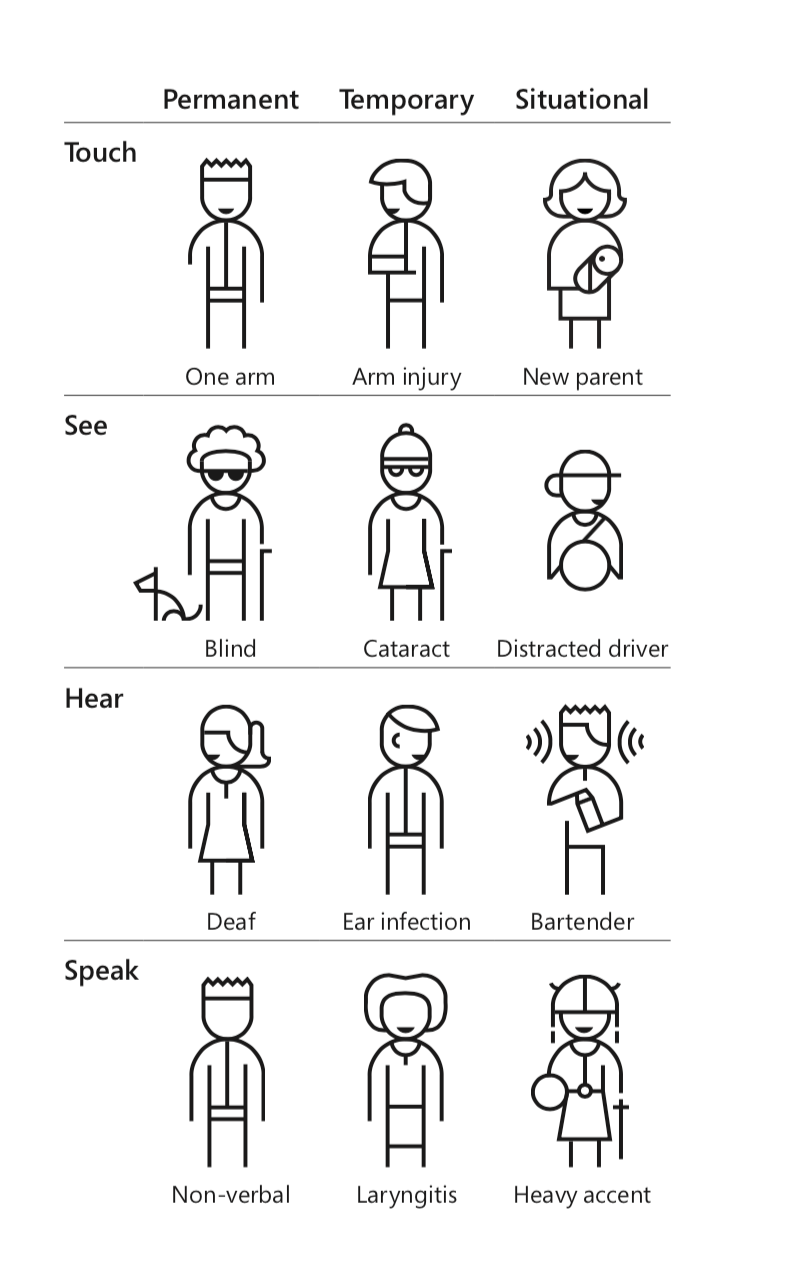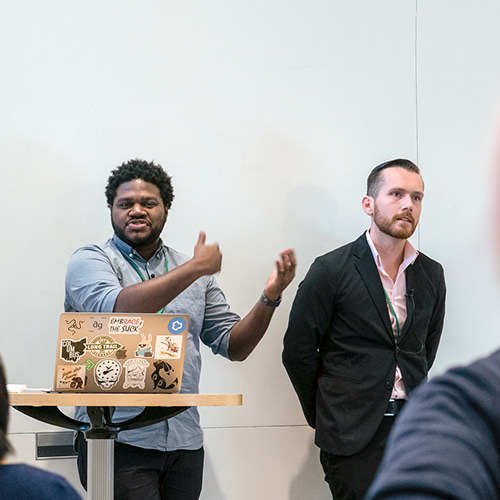If you play a role in creating any sort of digital product that people use, I have to tell you something: you have to be accessible. You don’t really have a choice. Accessibility (also referred to as a11y) means that you must provide ways for people to interact with your digital product in ways that respect a range of people’s physical and mental capabilities. The cost of avoiding accessibility goes beyond product adoption or negative reviews - you risk exposing your business to a lawsuit. Let’s discuss techniques and resources to get started on building more inclusive, accessible experiences.
Why accessibility?
The right answer should be that it’s the right thing to do, but if that isn’t enough of a reason: it’s the law. The American with Disabilities Act (ADA) outlines requirements of public and commercial accommodations needed to prevent discrimination of people with disabilities. Initially targeted at the built environment, ADA now includes the realm of digital experiences. When your organization creates digital products, legally these products must allow for people with varying physical and mental abilities to easily access content. Any assumptions about what people may or may not be able to do will now come with legal and civic consequences.
The numbers are on the rise for ADA website violation cases. Unfortunately, many of these could have been avoided if there was proactive awareness and action by the teams responsible for making these digital products. The Web Content Accessibility Guidelines (WCAG) were created primarily for people who work with web, and their recent success criteria standards (WCAG 2.1) share how to comply on mobile devices. The WCAG standards have 4 principles that websites are graded upon: how perceivable, operable, understandable, and robust the site is. Each grade represents the type of impact a website would have for a person trying to use a11y features to access the content. The standards have been adopted and enforced internationally to ensure the web remains accessible to all.
Although there currently are no regulatory standards like WCAG for mobile applications, that does not leave them out of litigation. Recently, Domino’s Pizza was sued on the basis that they did not provide an accessible experience on their website or their mobile apps; and the case was upheld by the Supreme Court. This is novel because this is one of the highest cases in recent years to not only state that websites adhere to a11y, but that mobile apps must also allow for access. It will be interesting to see what the future of mobile app lawsuits could look like for not following their device a11y patterns. There are ways to prevent this from occurring to your own digital products before, during, and after release.
Before Building.
Go together.
Be sure that you have a cross-disciplined team ready to learn and act on a11y. Get support from your product team and business/compliance. You should have a resource on board in product to deliver on the promise of a11y in all current and future decision making. Gaining an advocate for resources within business/compliance will be key to delivering an accessible product that fulfills the intention of your business. Keeping communication between all parties will be critical in ensuring that a11y does not cause any fear or unnecessary risk that including best practices would negatively impact product delivery.
Learn what a11y means for your platform.
Avoid legal risk by ensuring your product team is familiar with the best practices defined by the platform of your digital product. Leverage libraries, developer communities, and testing suites shared by the organizations who support the product’s a11y. Take advantage of the research that has already been done and ensure your team learns about how their roles impact the end product’s a11y.
If you are working outside of a common operating system or digital paradigm, be ready to commit a significant amount of time and money to research. Take advantage of similar research or products in the market that may have similar functionality and leverage any resources they provide on how their experiences accomodate for a11y.
While Working.
a11y as a success criteria.
Treat a11y features as any other digital product feature in development. Include compliance with a11y standards when releasing any user facing feature or functionality. Example: if you are adding an image to a webpage, ensure that descriptive alt text for screen readers is added as success criteria. Many of the common a11y success criteria for design and development align with already established best practices defined by the digital platform your team is using. For web it is advantageous to use features like keywords or good layout as this has the added benefit of being ranked higher within search engines.
Test with people with a range of abilities.
All products should have some form of testing done with people from outside of your organization who reflect users or potential users. Plan to test with your digital product as you are developing it to help identify key a11y areas that may challenge potential users who are trying to access content and functionality. Recruit users or potential users beyond some common exclusionary criteria such as age, education level, or English as a first language to view the impact your product decisions have on potential users of your digital product. Find ways to observe people to not only learn more about ideal usage of your product, but learn about situational limitations your users might face.

Evaluation and prioritization.
It is important to observe how your digital product may impact people of different abilities than those of your team. Take the opportunity to learn more about how a11y impacts your users experiences by having an evaluation with users of different disabilities. There are several considerations in setting up these types of user tests, but the insights will prove invaluable towards reducing the risk of releasing something that might actually be causing unintentional harm to people. Depending on your team’s research abilities, it may be best to hire on a person or team to help facilitate these sessions so your team can focus more on empathizing and learning. Prioritizing what your team observed into how you can address some of the insights you’ve gained from an activity such as an opportunity workshop. It will be easier to articulate how to approach next steps for remediation with a product team familiar with the observation and system standards from their learnings.
Kepp Learning.
Act on reviews and feedback.
Once a product is in the hands of users, have a plan to observe and act on the feedback received. A11y concerns are common to come across within mobile app store reviews with even some a11y organizations encouraging members to post feedback publicly. Find mechanisms within your digital product development process to capture, prioritize, and implement some of the changes needed for their experience.
Learn together.
Taking on a11y involves everyone involved in the creation and maintenance of your digital product. Continue to learn as a team and find ways of sharing learnings to other parts of your organization. Don’t be afraid to ask for help outside of your organization, as there are many resources available to get your team started.
Not sure where to start? Cantina has worked with a variety of clients to help them gain traction on a11y goals, expand their research and design capabilities, and build out successful accessible products. Reach out to us to continue this important conversation.




